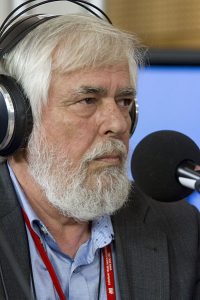Added Value and Struggle for Survival
The role of the EESC and the CoR is to give expert opinion to decision-making bodies of the EU and, by doing, so they represent interests of employers/trade unions and regional actors (Jeffrey & Rowe, 2012, p. 369). Nevertheless, both Committees have developed their roles beyond this original aim while facing calls for their closure. In this section, we will explore how they adjusted their roles within the institutional architecture (Jeffery & Rowe, 2012, p. 374).
The added value of the two committees is debatable. Their core weakness lies in the fact that they can only produce opinions and, as already mentioned, their opinions are not legally binding. Although the Lisbon Treaty expanded the policy areas where the EESC must be consulted in the legislative process (Jeffery & Rowe, 2012, p. 364), the opinions issued by the Committee have not been given any new significance and neither the Commission, nor the Council, nor the Parliament are obliged to take them into account. What is more, many officials think that the Committees simply add to the EU expenditure. In 2011, the Alliance of Liberals and Democrats for Europe (ALDE) group of the European Parliament called for reforms of the CoR and the abolition of the EESC to cut spending (Jeffrey & Rowe, 2012, p. 374).
Now, let’s look at both Committees separately to see their added value and how they have been struggling for survival.
EESC
One of the problems faced by the EESC was that it has never been regarded as an equal decision-making partner neither by the Council nor by the Commission. The Council perceived it as a supranational organisation reinforcing the Commission’s agenda, while the Commission saw it as additional workload when the EESC insisted on being heard. The EESC has been struggling to compete for powers and its status has been compared to ‘yet another EU lobby group’.
Nonetheless, the EESC has added some value to the decision-making process. One of the examples is to be found in the area of fundamental rights. The EESC’s report on a Community Charter of Basic Social Rights was used to form the EU’s Social Charter adopted in 1989 (Jefferey & Rowe, 2012, p. 370).
In order to strengthen its accountability since the 1990s, the EESC has been stressing its role of representation of civil society and it has transformed its institutional identity (Jefferey & Rowe, 2012, p. 370).
Read the EESC report ‘The European Economic and Social Committee during the Irish Presidency January-June 2013‘ selectively.
- What are the keywords used by the President of the EESC in the introduction that defines the role of Committee?
- What are the planned activities of the EESC (see page 7 of the report)?
- Does it see itself as an expert body or a representative body?
- Who does it represent?
CoR
In the beginning of its functioning, the CoR was criticised for adding little value to the decision making process and for giving low-quality opinions. This has changed over time, and today the CoR delivers advice only where it is mandatory or where it is welcomed. The overburden of giving opinions on its own initiative is thus limited (Jeffrey & Rowe, 2012, p. 371).
The powers of the CoR have been strengthened by the Treaties. The Nice Treaty made it mandatory for the CoR members to hold electoral accountability in their home countries, which added accountability value. The Lisbon Treaty added a new function of ‘watchdog’: if adopted legislation breaches the subsidiarity principle, the CoR may bring the case before the European Court of Justice, thus enhancing its role (Jeffrey & Rowe, 2012, p. 372).
Over the years, the CoR also adopted a more political identity. Namely, internal party-structures have been developed and closer relations with the European Parliament political groups followed (Jeffrey & Rowe, 2012, p. 373). The relations with the European Commission have also improved – the Commissioners attend the CoR’s plenary meetings and the number of non-mandatory opinion requests by the Commission has increased (Jeffrey & Rowe, 2012, p. 373).
Read the Mission Statement of the CoR. What are the roles of the CoR envisioned in the document?
Read the CoR report: Political priorities for action in 2010-2012
- How does the President of the CoR describe the role and the status of the Committee?
- What are the political groups in the CoR ?
Calendar
| M | T | W | T | F | S | S |
|---|---|---|---|---|---|---|
| 1 | 2 | 3 | 4 | 5 | 6 | 7 |
| 8 | 9 | 10 | 11 | 12 | 13 | 14 |
| 15 | 16 | 17 | 18 | 19 | 20 | 21 |
| 22 | 23 | 24 | 25 | 26 | 27 | 28 |
| 29 | 30 | 31 | ||||

Leave a Reply